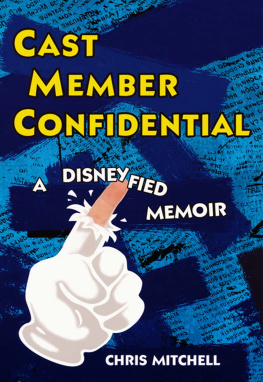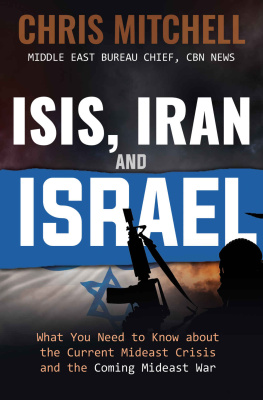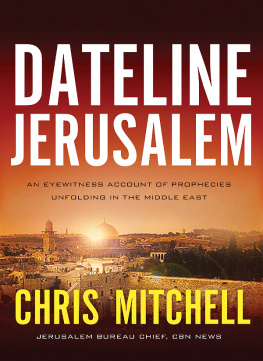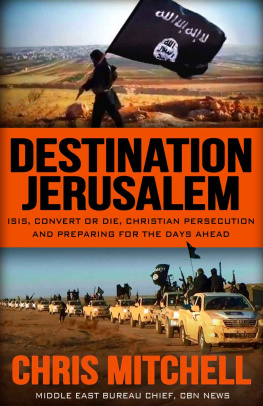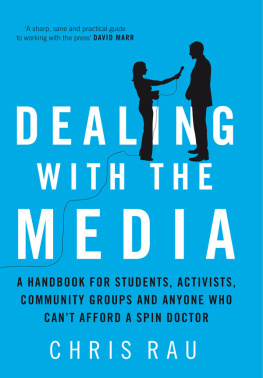Chris Mitchell began his career in late 1973 in Brisbane on the afternoon daily, The Telegraph. He worked on the Townsville Bulletin, the Sydney Daily Telegraph and The Australian Financial Review before joining The Australian in 1984. In 1992 he was appointed editor of The Australian and in 1995 editor-in-chief of Queensland Newspapers, where he edited The Courier-Mail and oversaw The Sunday Mail and the companys regional dailies on the Gold Coast, in Townsville and in Cairns. He returned to Sydney as editor-in-chief of The Australian in 2002 and held that position until his retirement in December 2015. He has served on various academic boards in Brisbane and has chaired Media Team Australia, a nonprofit organisation designed to help train other community groups in media access and use.
This is a compelling book by one of Australias most significant newspaper editors. No other book gives such a strong sense of what it is actually like to be a newspaper editor. Each chapter is full of drama, deadlines, pressure, legal questions and great big personalities all striving for some influence in what is still societys most dynamic institution. The stories race along, just as an editors day races along, towards the daily climax of deadline and consequences far beyond deadline. The sheer energy of the enterprise, the daily high-stakes decisions, the clash of ideas and interests are the stuff of epic drama. This is a unique contribution to the history of newspapers, and therefore to the history of ideas, the political and cultural history, of our nation. GREG SHERIDAN

MELBOURNE UNIVERSITY PRESS
An imprint of Melbourne University Publishing Limited
Level 1, 715 Swanston Street, Carlton, Victoria 3053, Australia
www.mup.com.au
First published 2016
Text Chris Mitchell 2016
Design and typography Melbourne University Publishing Limited 2016
This book is copyright. Apart from any use permitted under the Copyright Act 1968 and subsequent amendments, no part may be reproduced, stored in a retrieval system or transmitted by any means or process whatsoever without the prior written permission of the publishers.
Every attempt has been made to locate the copyright holders for material quoted in this book. Any person or organisation that may have been overlooked or misattributed may contact the publisher.
Cover design by Philip Campbell Design
Typeset in 12/15pt Bembo by Cannon Typesetting
Printed in Australia by Macphersons Printing Group
National Library of Australia Cataloguing-in-Publication entry
Mitchell, Chris, 1964 author.
Making headlines/Chris Mitchell.
9780522870701 (paperback)
9780522870718 (ebook)
Includes index.
Australian newspapersHeadlines.
Newspaper publishingAustralia.
JournalismAustralia.
079.94
Contents
Acknowledgements
I WOULD LIKE TO thank my four children, my ex-wives and my beautiful wife Cathy for supporting me while I held one of the most demanding jobs imaginable. Editors wives need to be saints. I thank my mother, a widowed refugee, for my education and the good advice she offers me regularly. I thank my dear friends Paul Kelly, Greg Sheridan, Hedley Thomas and Tony Koch for their support and inspiration throughout my two and a half decades as an editor. I am grateful to all the brilliant reporters, artists, subeditors and editors who have worked for me, particularly Michelle Gunn, Clive Mathieson, Paul Whittaker and Michael Stutchbury. I thank my wifes daughter Gina Rushton for working as my typist on this book.
Lastly, I acknowledge the friendship, help and advice I received from former News Limited CEOs John Hartigan and Ken Cowley and the constant support, encouragement and friendship of Rupert and Lachlan Murdoch.
Prologue
A FTER A QUARTER of a century as a daily newspaper editor, I decided in mid-2015 to pull the plug. When it became clear that Tony Abbott was almost certain to lose his prime ministership, I decided, in September 2015, it was time for me to go too. A quarter of a century was enough for anyone. I had become an editor when Bob Hawke was prime minister. The revolving door of leadership change after the 2007 election loss by John Howard was disheartening. I have always believed in the role of the national daily newspaper in the great Australian nation-building project. As a creature of politics from early childhood with a father who worked in Canberra, I had tried to make my paper, The Australian, instrumental in the policy debates of the nation. But politics had become a farce, and I had grown cynical about modern political leaders, as well as the effects of modern media trends on politics.
I decided to write a book about my time as an editor to give people interested in the way the nation works politically a chance to see how the relationship between government and the media operates. I wanted to share my thoughts on being an editor and the future of journalism. After seven thousand front pages and twenty-four years editing daily papers, no memoir could track all the big stories I have been involved in. To keep this book to a manageable length, I decided that it should have two strands: prime ministers and journalism, since I had known all the prime ministers well during that time and was the countrys longest serving editor. Niki Savvas wonderful chronicle of the downfall of Tony Abbott, The Road to Ruin, attracted criticism because Niki did not seek comment from her central characters: Abbott and his chief of staff, Peta Credlin. I have not sought comment from others for this book either. The book is not a political history in any way. It is my memoir of my time at the helm of two large daily newspapers and as editor-in-chief of all the papers under the Queensland Newspapers umbrella. It is a book about an editors life rather than a political history.
In the book I have betrayed some confidences of all the prime ministers I have dealt with. This is fair enough since I have retired and they have all left politics, apart from Abbott, who probably should have left before I did. I have also tried to give these national leaders due credit for their strengths. I have focused on prime ministers because a book that included treasurers, Opposition leaders and state premiers would be too cumbersome, and boring. And why not leaders in business, the arts and sport? In truth, like all editors of major newspapers, I have had extensive contacts with all of the above for many decades, but they might not make interesting reading. I think my contacts with prime ministers and thoughts on the media will, however, be interesting to many readers.
I believe sharing stories about a daily newspaper editors interactions with national leaders will give readers an unusual perspective on the sometimes bizarre relationship between politics and media. The truth is that newspaper editors still drive the national media agenda. Their ideas are followed by news directors in the electronic media and on social media. The newspaper editors I have known and worked with have been very serious and thoughtful about how they wield their power. I hope I have been too, and I trust that my stories are both amusing and instructive. I hope my thoughts about journalism, its future and the stories I have counted as my most important will shed some light on how editors think and work. I hope my reflections on the Murdoch family and News Corporation will bring some much-needed balance to an often hysterical discussion about this media empire.


